First we headed up Empire Grade to hit some spots on the side of the road. Flipping an old carpet and another rubber mat we ran into our first herps.
Under the rubber mat was a pair of Northern Alligator Lizards, Elgaria coerulea. The normal female was gravid with a uterus full of babies that she will give live birth to in a few months. The male was stunning and patternless. Even this far north in California the Southern gators are more common so this was a great treat. I always enjoy seeing wild morphs, such as the leucistic Coleonyx we find in the Mojave Desert.
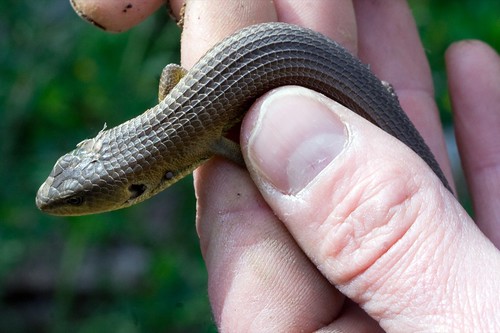 |
| Patternless male |
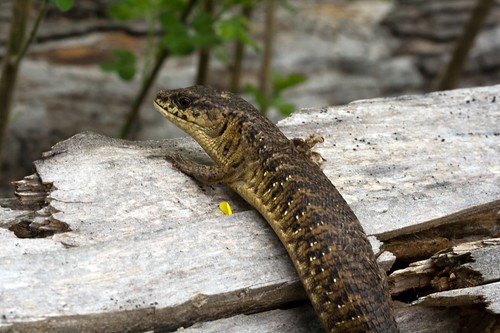 |
| Gravid female |
Next under the old carpet we found my first snake of 2011. It was a nice adult Ring-necked snake, Diadophis punctatus. In the third photo notice the mangled tail. The evolved defense mechanism worked!
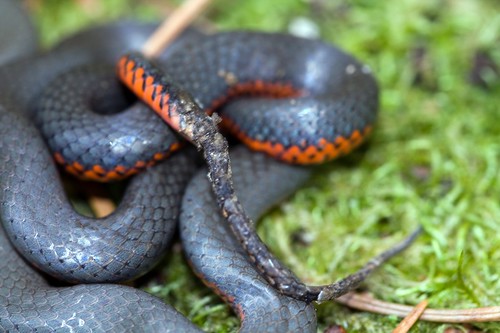 |
| Mangled tail means the defense mechanism worked |
Next we hit up another Empire Grade spot and found a pile of roofing tile. John was much more ambitious than I was and started digging through the 200 plus tiles. We found Blue-bellies, Sceloporus occidentalis, under every few tiles. We must have seen 40+ individuals. Nearly all the adults were female (9 out of 10 or so). There were also dozens of youngsters running around among the tiles.
At the bottom of the one of the tile piles was this gopher snake, Pituophis catenifer catenifer. It looked as if it was just coming out of hibernation, maybe throwing a coil or two out when the sun shined its life giving rays near the tile pile.
Stay tuned for Part 2 when we get to the Amphibians.

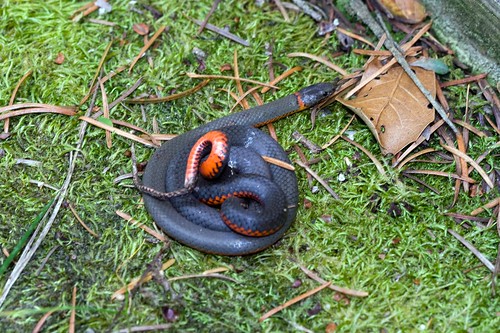
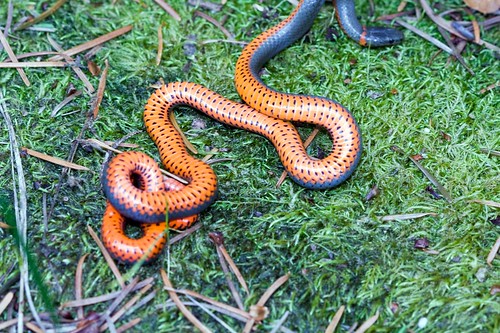

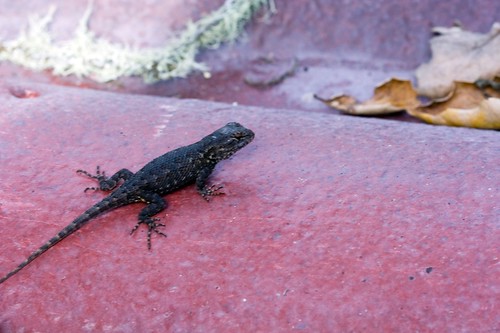
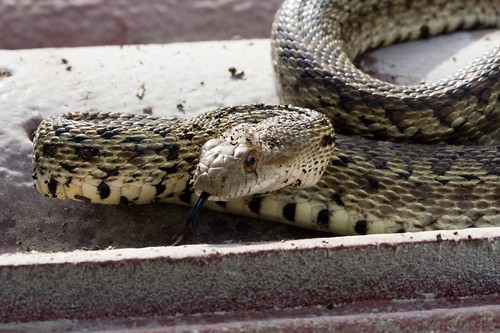
Outstanding! Pituophis is my favorite snake Genus!
ReplyDeleteNice. Glad to still see coerulea that far down the range. So far our herping seasons are quite complementary - I've only found coast & sc mtn garters, a sharp-tailed snake and northern alli lizards. :)
ReplyDeleteSeems like it was a tremendous day. I dig that skink shot a lot too.
ReplyDeleteHey, my old stomping grounds. Used to get there via Hubbard Gulch. Sounds like you had fun, except there were no sallies. Got two zonata in Santa Cruz County-- one in Ben Lomond and one on Rt 9 near Big Basin. That was long ago.
ReplyDeleterandomtruth: I was a little surprised we did not turn up a sharp-tail. Nice on the Northern alligators, even in the North and East Bays the Southerns are more common.
ReplyDeleteCodge: We were in your old background. No Dicamptodons but some good Salamanders in the next post. Still have to give Rt 9 a good look this season.
Trailblazer: Pituophis are great but you may the first person I know to call them their favorite genus. Really hope to find some in the Mojave Desert this year. The Great Basin Gophers are just stunning with their sharp contrasting colors.
ReplyDeleteJK: My fave, for sure! My disseration research was three years of radio telemetry on a congener: the Bullsnake (P. c. sayi).
ReplyDeleteBig, fiesty, a draw blood if they bite. Doesn't get any better! :)
Trailblazer: That is awesome. Is your research published somewhere? I would be interested in reading it. I have access to most journals so subscription is not a problem.
ReplyDeleteSure....
ReplyDeleteI suppose it would seem alittle self-gratifying for me to post the citations in the comment area...
If you'd like to give me your email address, I can send pdfs of them directly to you...
Thanks for your interest!
Sorry I did not realize you were already faculty looking at your bio. Asking if it was published was pretty stupid in hindsight.
ReplyDeleteI look forward to reading them: kirklandj@gmail.com
Thanks
This comment has been removed by the author.
ReplyDeleteNot stupid at all! Email is forthcoming!
ReplyDeleteOK, JK...
ReplyDeleteHopefully, the email should have reached you. Let me know if you don't get it and re-send.
I actually meant southern alligator lizards (unfortunately). I've only caught a couple of northerns up here along the peninsula in my years looking - they're quite uncommon and I only find them on the ridge and west side of the sc mountains.
ReplyDelete